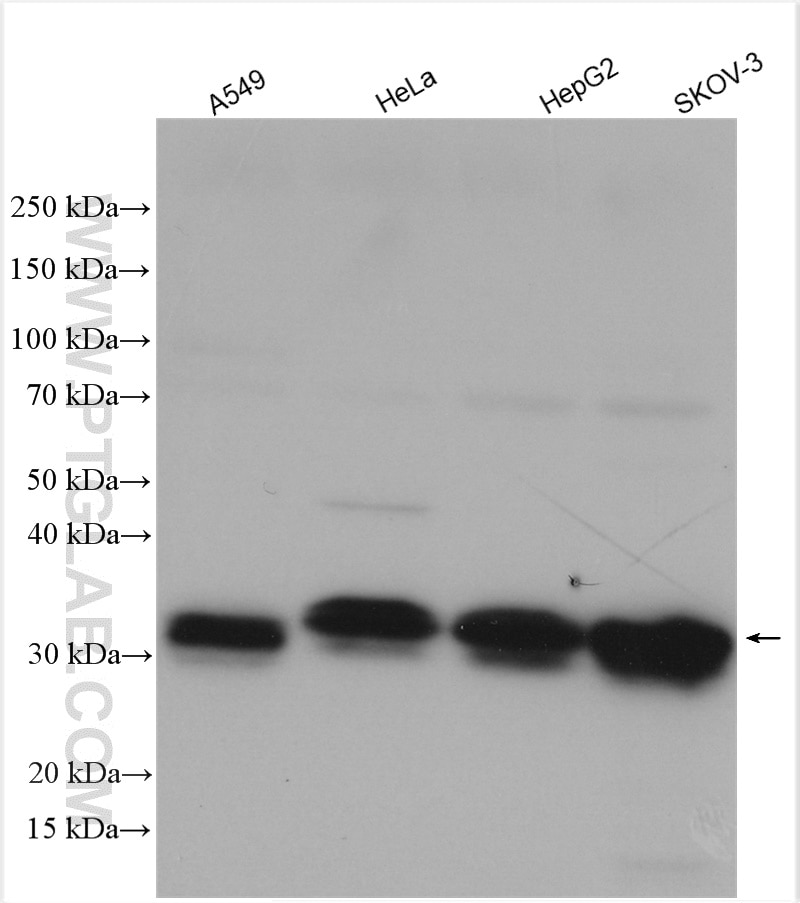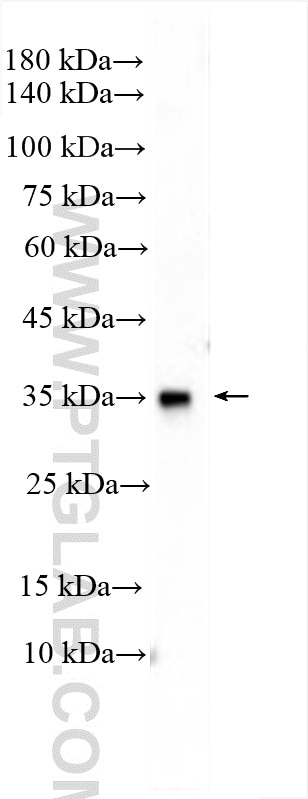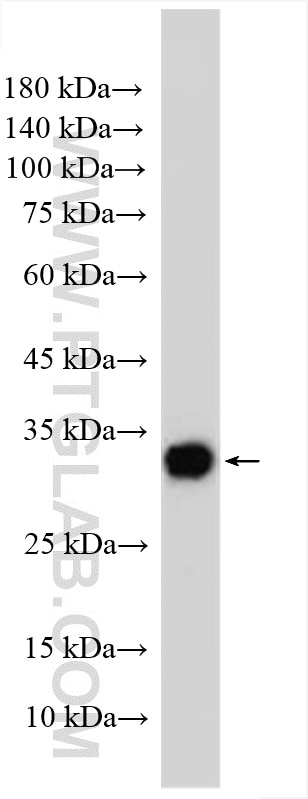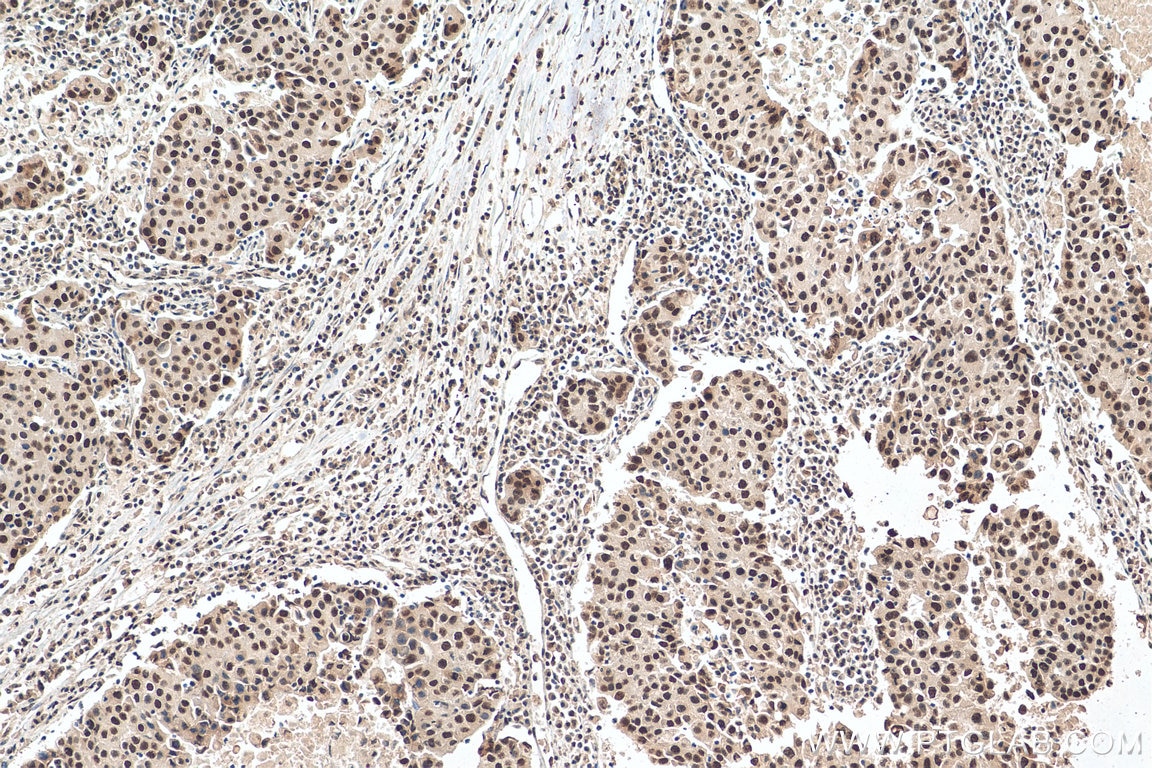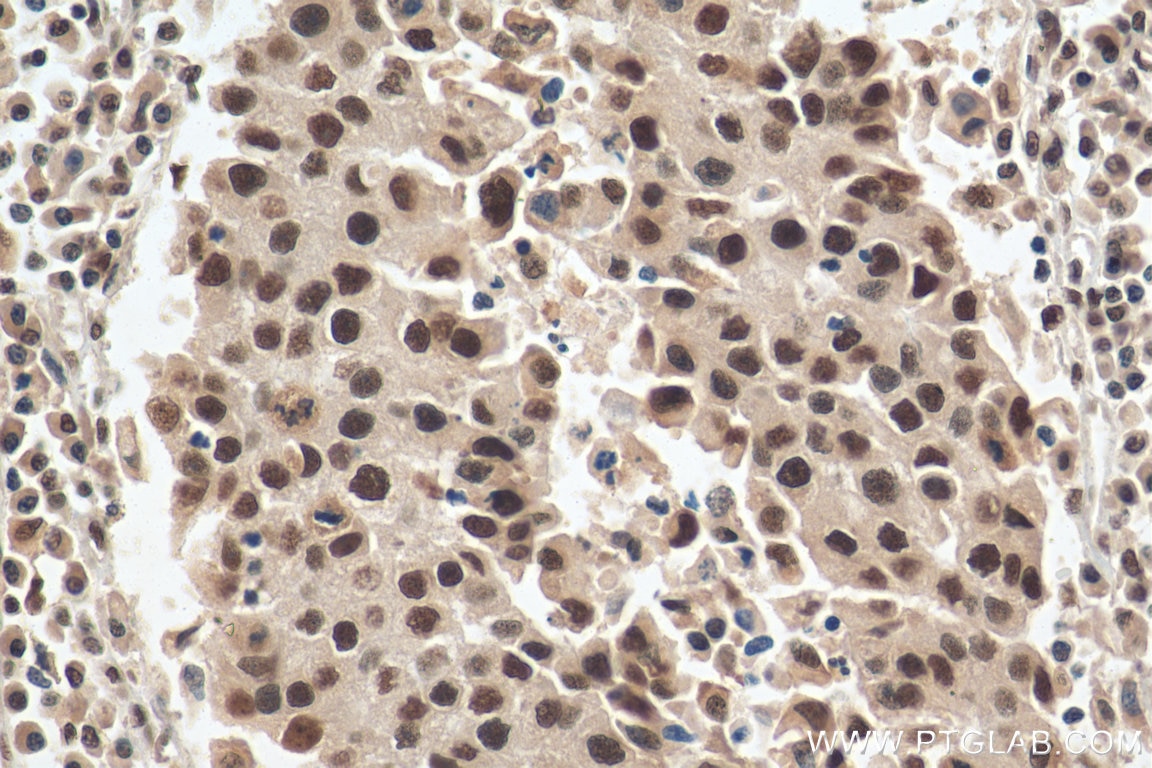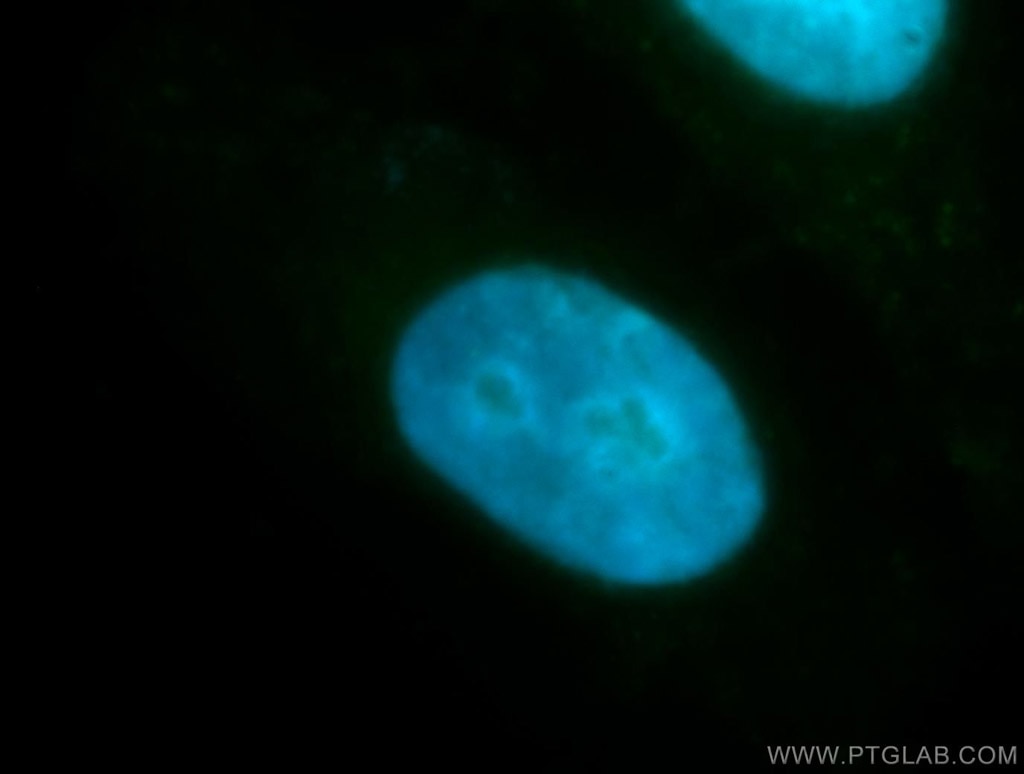- Phare
- Validé par KD/KO
Anticorps Polyclonal de lapin anti-SFRS7
SFRS7 Polyclonal Antibody for WB, IF, IHC, ELISA
Hôte / Isotype
Lapin / IgG
Réactivité testée
Humain, rat, souris
Applications
WB, IHC, IF/ICC, ELISA
Conjugaison
Non conjugué
N° de cat : 11044-1-AP
Synonymes
Galerie de données de validation
Applications testées
| Résultats positifs en WB | cellules A549, cellules HeLa, cellules HepG2, cellules SKOV-3, tissu testiculaire de rat, tissu testiculaire de souris |
| Résultats positifs en IHC | tissu de cancer du sein humain, il est suggéré de démasquer l'antigène avec un tampon de TE buffer pH 9.0; (*) À défaut, 'le démasquage de l'antigène peut être 'effectué avec un tampon citrate pH 6,0. |
| Résultats positifs en IF/ICC | cellules HepG2 |
Dilution recommandée
| Application | Dilution |
|---|---|
| Western Blot (WB) | WB : 1:1000-1:8000 |
| Immunohistochimie (IHC) | IHC : 1:50-1:500 |
| Immunofluorescence (IF)/ICC | IF/ICC : 1:20-1:200 |
| It is recommended that this reagent should be titrated in each testing system to obtain optimal results. | |
| Sample-dependent, check data in validation data gallery | |
Applications publiées
| KD/KO | See 5 publications below |
| WB | See 6 publications below |
| IHC | See 1 publications below |
| IF | See 1 publications below |
Informations sur le produit
11044-1-AP cible SFRS7 dans les applications de WB, IHC, IF/ICC, ELISA et montre une réactivité avec des échantillons Humain, rat, souris
| Réactivité | Humain, rat, souris |
| Réactivité citée | Humain |
| Hôte / Isotype | Lapin / IgG |
| Clonalité | Polyclonal |
| Type | Anticorps |
| Immunogène | SFRS7 Protéine recombinante Ag1526 |
| Nom complet | splicing factor, arginine/serine-rich 7, 35kDa |
| Masse moléculaire calculée | 27 kDa |
| Poids moléculaire observé | 35 kDa |
| Numéro d’acquisition GenBank | BC000997 |
| Symbole du gène | SFRS7 |
| Identification du gène (NCBI) | 6432 |
| Conjugaison | Non conjugué |
| Forme | Liquide |
| Méthode de purification | Purification par affinité contre l'antigène |
| Tampon de stockage | PBS avec azoture de sodium à 0,02 % et glycérol à 50 % pH 7,3 |
| Conditions de stockage | Stocker à -20°C. Stable pendant un an après l'expédition. L'aliquotage n'est pas nécessaire pour le stockage à -20oC Les 20ul contiennent 0,1% de BSA. |
Informations générales
SFRS7 is a member of the serine/arginine (SR) splicing factor family, which mediated the alternative splicing events target the resulting mRNAs for degradation by means of an RNA surveillance pathway called nonsense-mediated mRNA decay. It was found to repress the splicing of MAPT/Tau exon 10
Protocole
| Product Specific Protocols | |
|---|---|
| WB protocol for SFRS7 antibody 11044-1-AP | Download protocol |
| IHC protocol for SFRS7 antibody 11044-1-AP | Download protocol |
| IF protocol for SFRS7 antibody 11044-1-AP | Download protocol |
| Standard Protocols | |
|---|---|
| Click here to view our Standard Protocols |
Publications
| Species | Application | Title |
|---|---|---|
Gastroenterology Proteomic characterization identifies clinically relevant subgroups of gastrointestinal stromal tumors | ||
Cell C9orf72 Dipeptide Repeats Impair the Assembly, Dynamics, and Function of Membrane-Less Organelles. | ||
Nucleic Acids Res Sequence-dependent recruitment of SRSF1 and SRSF7 to intronless lncRNA NKILA promotes nuclear export via the TREX/TAP pathway.
| ||
Nucleic Acids Res Exonic splicing code and protein binding sites for calcium.
| ||
Genomics Proteomics Bioinformatics Specific Regulation of m6A by SRSF7 Promotes the Progression of Glioblastoma.
| ||
Genes Genomics SRSF7 is a promising prognostic biomarker in hepatocellular carcinoma and is associated with immune infiltration
|
Avis
The reviews below have been submitted by verified Proteintech customers who received an incentive forproviding their feedback.
FH Jingwen (Verified Customer) (04-28-2021) | The staining signal showed up inside the nucleus.
|
